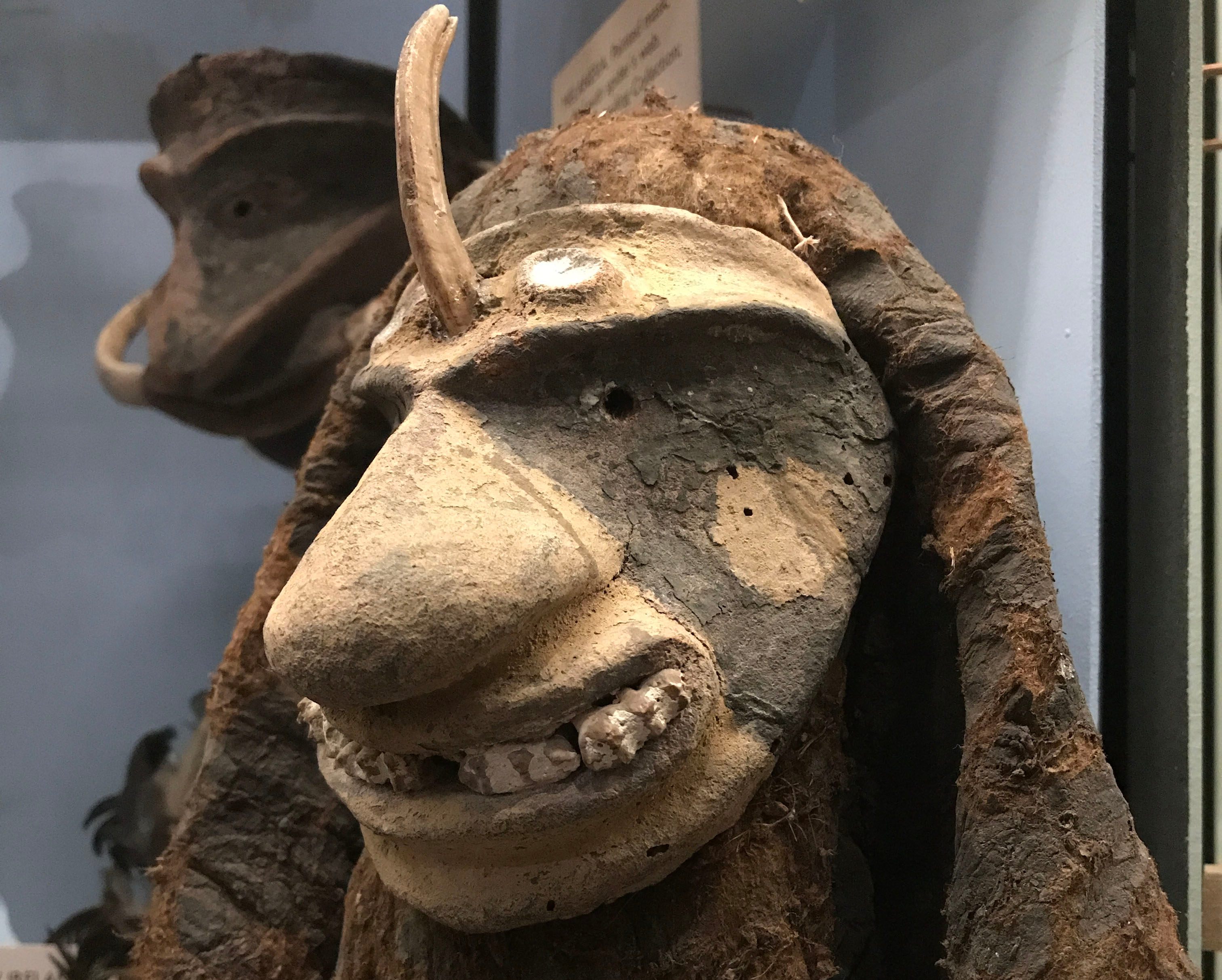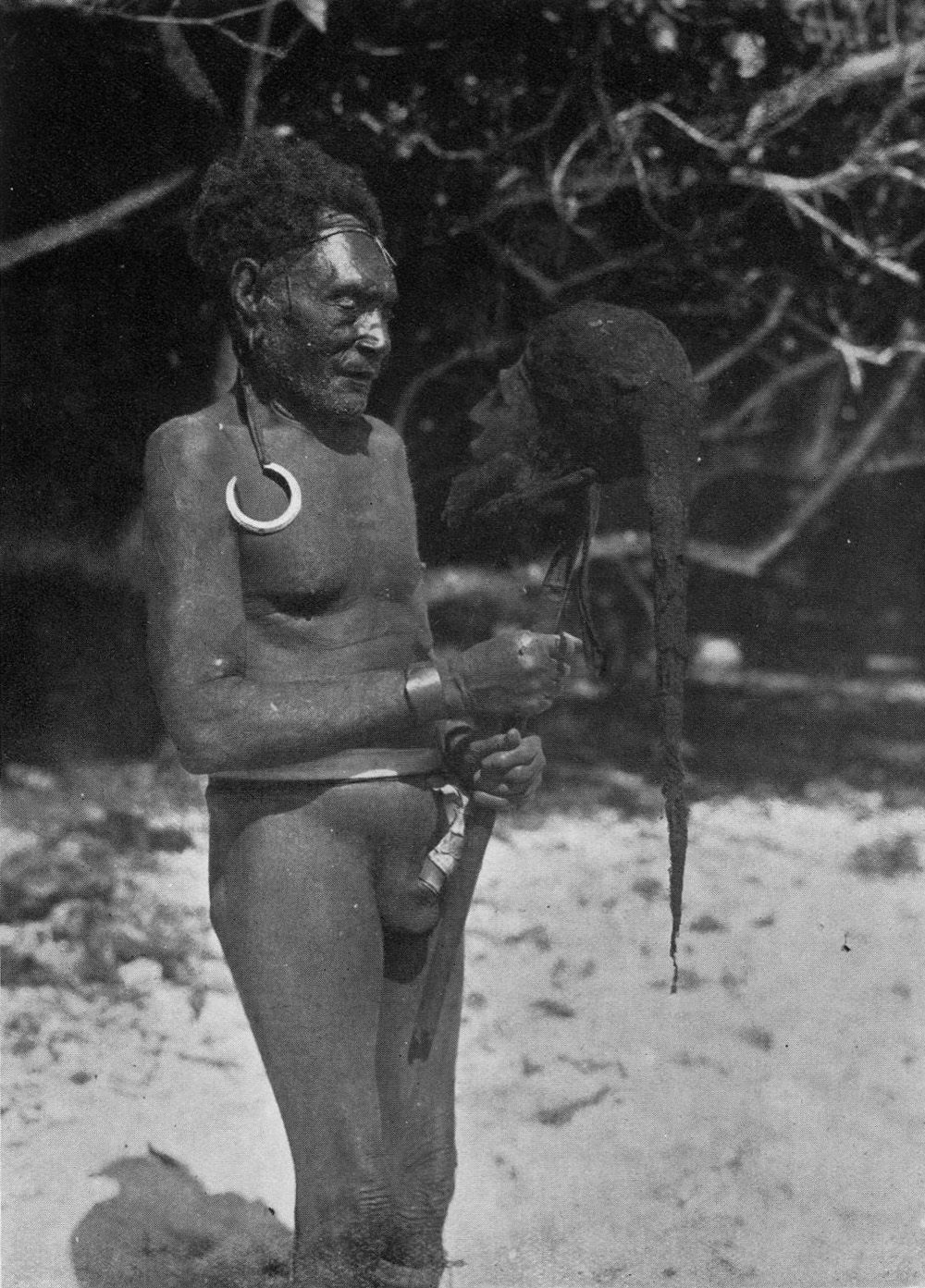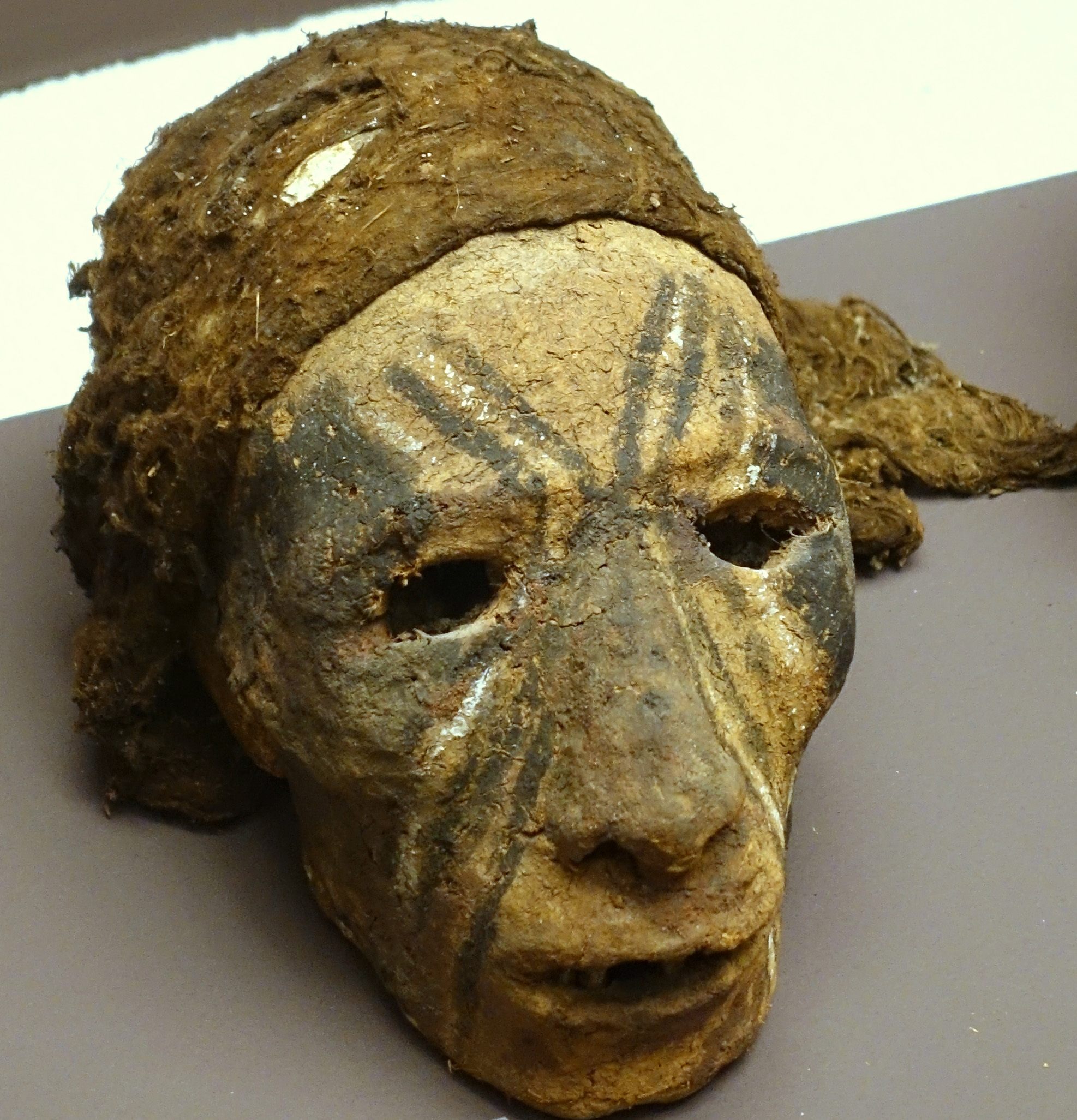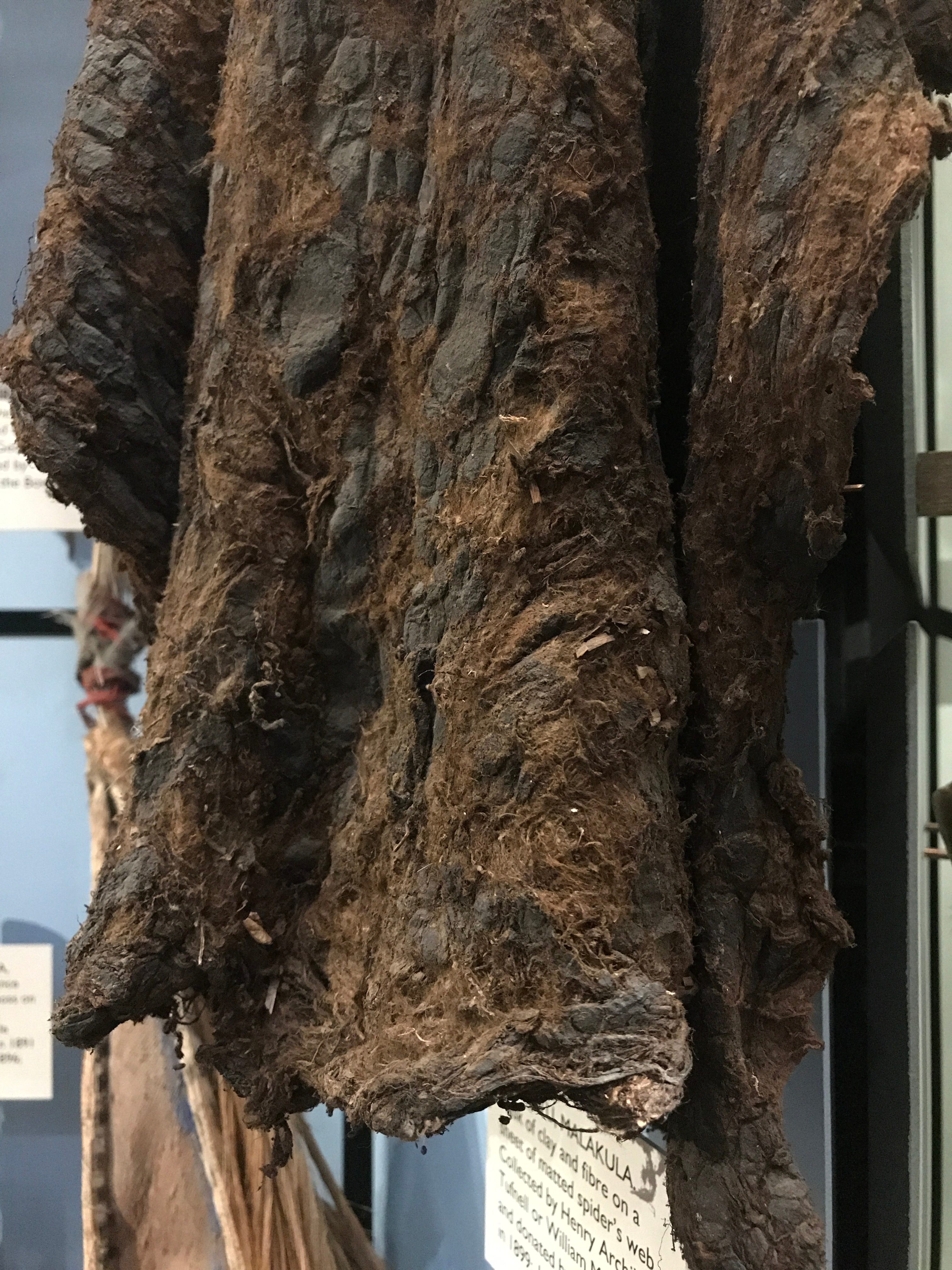These Hoods Made of Spider Webs Have Long Been Misunderstood
From Vanuatu, they’ve been described as “smothering hoods and “caps of death.”

Set in a clutter of artifacts and ornaments at the Pitt Rivers Museum in Oxford, England, the mask from Malakula, Vanuatu is easily missed. At first, it’s hard to know why, amid so many other treasures, you’d look twice at it at all.
Shift your gaze from the swooping tusk extending from its forehead and look down to the scrubby brown cloth beneath it. Though it may look like a piece of old felt, the clue is in the caption: “Mask of clay and fibre on a sheet of matted spider’s web.”
The tiny island of Malakula has a lot of “onlys” for a place of barely 25,000 people: the only place where, until recently, infants’ heads were bound so they grew into cone shapes. The only place where the names of its tribes, Big Nambas and Small Nambas, come from the size of their banana-leaf penis sheaths. And the only place in the world where the webs of the golden orb spider, Nephila, are traditionally felted together—into a strong, silky, waterproof cloth that lasts for decades.


Malakulan spider-web cloth can be found in museums across the Western world—in Germany, France and the UK. It has often been used to make ceremonial caps, sometimes up to a meter in length, with strings at their peaks. But for almost every museum where these are found, there’s a spurious, even harmful, explanation for their original use.
Because some South Pacific Islands did have practices in which widows were killed at their husbands’ funerals, many puzzled early curators or collectors took one look at these caps, with their arachnid origins, and spun their own particular yarn. At London’s Science Museum, the cap is described as a “smothering hood”; the Pitt Rivers calls it a “cap of death,” “drawn over widows’ eyes when they were strangled at the husbands’ funeral,” like a snuffer over a candle flame.
Other museums have been more circumspect: the British Museum calls it a “night cap,” while another hesitantly describes it as “a (smoking?) cap.”
But artist and researcher Eleanor Morgan, author of Gossamer Days: Spiders, Humans and Their Threads, says there’s no evidence to suggest that these caps were ever used for anything so sinister.
To begin with, the silky spider-web fabric certainly wouldn’t be effective in suffocating anyone, she says. “It isn’t going to stop you breathing. Just practically, that’s not going to make sense.” Instead, she believes these caps were used by male secret societies as a symbol of seniority. “The longer the tail at the back of the cap, the more senior you are.”

Male seniority rituals in Malakula, in which these caps played a part, are clandestine and complicated. They might involve sacrificing as many as hundreds of pigs over one’s lifetime. Important members of the community are seen as being already partly dead, spending part of their time among the spirits, who in turn convey messages to the living. The length of their spider-web hood helps communicate that seniority.
But how are they made? In Gossamer Days, Morgan describes a morning’s work. Armed with a bamboo cane frame, shaped like a cross between a rake and a funnel, the men “use a winding twisting motion [to] collect the spiders webs they pass until a thick felt-like fabric has been formed.” The strands are wrapped around the cane like cotton candy fibers around a stick. The golden orb spider is barely the size of a bean, but its web is vast, stretching out for meters in diameter, with more strands extending back behind it. As more webs are collected, they stick to one another, meshing together into a thick piece of cloth.

Eventually, the fabric is knotted together and removed from the frame. It’s now in the shape of a tapered bag, which can easily be turned into a conical headdress. To make larger pieces of fabric, either for backing masks or making larger items of clothing like tunics, these are beaten together with other webs.
Though Morgan wore gloves to handle the caps, she couldn’t resist brushing the fabric against her wrist, to feel it against her skin. “It feels incredibly soft,” she says. “But because it’s layered spider webs, it’s obviously got the bits of stuff, whatever the spider caught in its web that night, so it also has little scratchy bits of wood and dust and beetle-wing and fly.”
That slight tackiness doesn’t go away: over time, the fabric thickens as hair or dust adheres to it, even within its museum glass cases. In the men’s huts, campfire soot blackens the caps over time, as they are handed on from generation to generation until they fall apart.

The potential for weaving with golden threads of the Nephila spider has fascinated humans across the Pacific and the centuries—the French colonial government in Madagascar apparently had a full-blown silk spinning operation, while artist Simon Peers used the silk of over a million spiders to create a dazzling gold cape, exhibited at the Victoria and Albert Museum in London in 2012.
Eight spiders at a time were loaded into a guillotine-like trap, while their silk was pulled from their bodies onto bobbins, like silk from a spool.
The golden orb spider lives barely a year—each evening, it weaves a new web, which it takes down again at dawn. Peers’ cape, like the Malakulan spider web caps, makes those evanescent threads and makes them permanent. This, he told the Financial Times in 2012, “is the antithesis of the brief, ephemeral life of a web.”
















Follow us on Twitter to get the latest on the world's hidden wonders.
Like us on Facebook to get the latest on the world's hidden wonders.
Follow us on Twitter Like us on Facebook